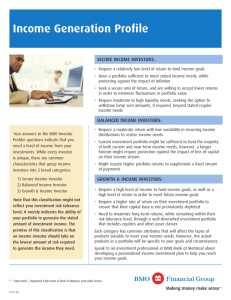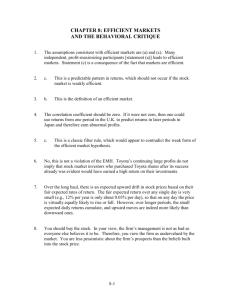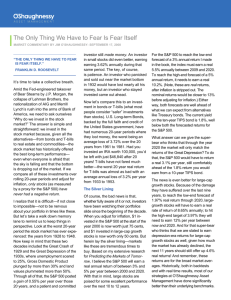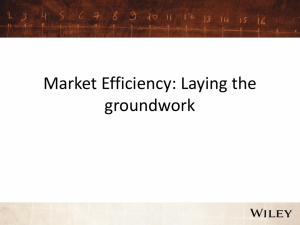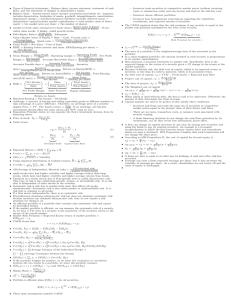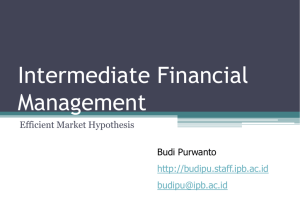'Buy and Hold' Is Still a Winner
advertisement
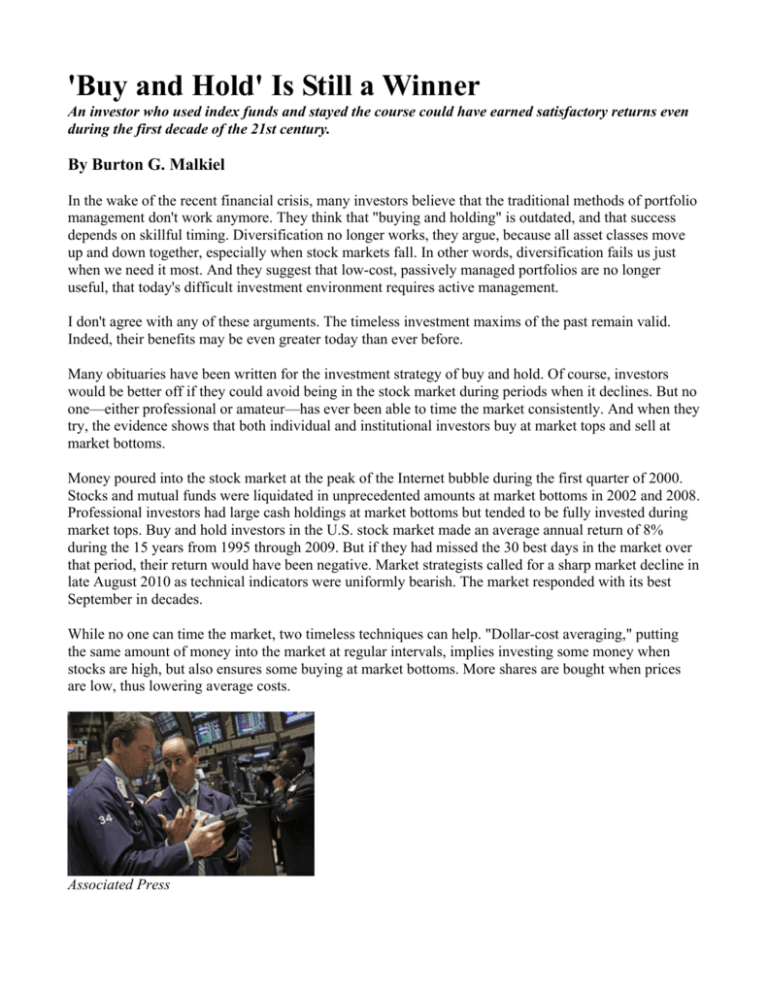
'Buy and Hold' Is Still a Winner An investor who used index funds and stayed the course could have earned satisfactory returns even during the first decade of the 21st century. By Burton G. Malkiel In the wake of the recent financial crisis, many investors believe that the traditional methods of portfolio management don't work anymore. They think that "buying and holding" is outdated, and that success depends on skillful timing. Diversification no longer works, they argue, because all asset classes move up and down together, especially when stock markets fall. In other words, diversification fails us just when we need it most. And they suggest that low-cost, passively managed portfolios are no longer useful, that today's difficult investment environment requires active management. I don't agree with any of these arguments. The timeless investment maxims of the past remain valid. Indeed, their benefits may be even greater today than ever before. Many obituaries have been written for the investment strategy of buy and hold. Of course, investors would be better off if they could avoid being in the stock market during periods when it declines. But no one—either professional or amateur—has ever been able to time the market consistently. And when they try, the evidence shows that both individual and institutional investors buy at market tops and sell at market bottoms. Money poured into the stock market at the peak of the Internet bubble during the first quarter of 2000. Stocks and mutual funds were liquidated in unprecedented amounts at market bottoms in 2002 and 2008. Professional investors had large cash holdings at market bottoms but tended to be fully invested during market tops. Buy and hold investors in the U.S. stock market made an average annual return of 8% during the 15 years from 1995 through 2009. But if they had missed the 30 best days in the market over that period, their return would have been negative. Market strategists called for a sharp market decline in late August 2010 as technical indicators were uniformly bearish. The market responded with its best September in decades. While no one can time the market, two timeless techniques can help. "Dollar-cost averaging," putting the same amount of money into the market at regular intervals, implies investing some money when stocks are high, but also ensures some buying at market bottoms. More shares are bought when prices are low, thus lowering average costs. Associated Press The other useful technique is "rebalancing," keeping the portfolio asset allocation consistent with the investor's risk tolerance. For example, suppose an investor was most comfortable choosing an initial allocation of 60% equities, 40% bonds. As stock and bond prices change, these proportions will change as well. Rebalancing involves selling some of the asset class whose share is above the desired allocation and putting the money into the other asset class. From 1996 through 1999, annually rebalancing such a portfolio improved its return by 1 and 1/3 percentage points per year versus a strategy of making no changes. Diversification has not lost its effectiveness. Over the past several years, when stocks went down, bonds went up, preserving the value of the portfolio. And while stock markets around the world have tended to rise and fall together, there were huge differences in regional returns. Even though portfolios in the U.S. market actually lost money in the first decade of the 21st century, emerging-market stocks enjoyed returns of more than 10% per year. Every portfolio should have substantial holdings in the fast-growing emerging economies of the world. Low-cost passive (index-fund) investing remains an excellent strategy for at least the core of every portfolio. Even if markets may not always be efficiently priced, index funds must produce aboveaverage returns after costs. All the stocks in the market must be held by someone. Therefore, if one active portfolio manager is holding the better-performing stocks, then some other active manager must be holding those with below-average returns. But active managers charge substantial investment fees, and their buying and selling of securities in their attempt to beat the market generates significant transaction costs (and possibly greater taxes). Index mutual funds and their exchange-traded-fund (ETF) cousins do not trade from security to security, and they charge rock-bottom expenses (usually well below one-tenth of 1%). The one investment principle about which I am absolutely sure is that the less I pay to the purveyor of an investment service, the more there will be for me. As Jack Bogle, founder of the Vanguard Group, says: "In the investment fund business, you get what you don't pay for." The evidence is clear. Low-cost index funds regularly outperform two-thirds of actively managed funds, and the one-third of actively managed funds that outperform changes from period to period. Even the very few professional investors who have beaten the market over long periods of time—Berkshire Hathaway's Warren Buffett and Yale University's David Swensen, for instance—are quick to advise that investors are likely to be much better off with simple low-cost index funds than with expensive actively managed funds. The chart nearby illustrates how someone who invested $100,000 at the start of 2000 and, following my advice, used index funds, stayed the course and rebalanced once a year, would have seen that investment grow to $191,859 by the end of 2009. At the same time, someone buying only U.S. stocks would have seen that same investment decline to $93,717. The recommended index-fund portfolios contain bonds, U.S. stocks, foreign stocks (including those from emerging markets) and real-estate securities. The diversified portfolio, annually rebalanced, produced a satisfactory return even during one of the worst decades investors have ever experienced. And if the investor also used dollar-cost averaging to add small amounts to the portfolio consistently over time, the results would have been even better. If you ignore the pundits who say that old maxims don't work and you follow the time-tested techniques espoused here, you are likely to do just fine, even during the toughest of times. Mr. Malkiel is a professor of economics at Princeton University. This op-ed was adapted from the upcoming 10th edition of his book "A Random Walk Down Wall Street," out in December by W.W. Norton.

